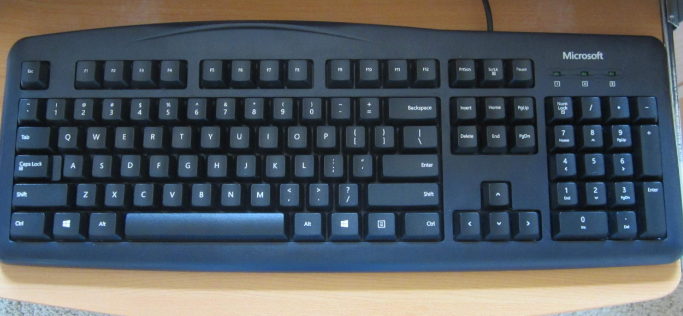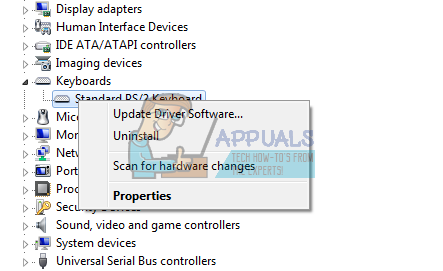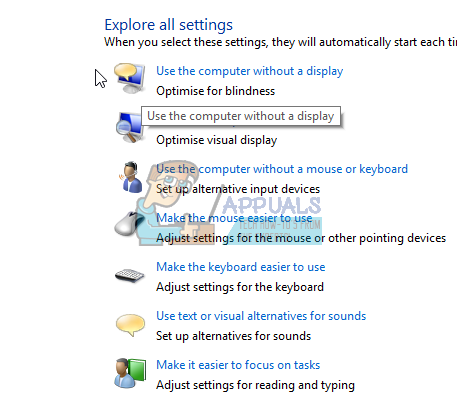Fix: Keyboard Number Pad Not Working
Sometimes, the number keys on keyboards can stop working – this holds true for the number keys located in the row above the alphabetical keys, the number keys located in the Numpad on the right side of the average keyboard, and (in some cases) even both. The number keys can on your keyboard might stop working for one of a dozen different reasons, the most common ones being a hardware problem, an issue with your keyboard’s drivers or an anomaly in your keyboard settings that has rendered the number keys unusable.
This is a known problem across all versions of the Windows Operating System, so having a specific version of Windows does not leave you susceptible to this problem. Since there are so many possible causes of this problem, there are also just as many possible solutions. If the number keys on your keyboard have stopped working, the following are the most effective solutions that you can use to try and resolve the problem:
Method 1: Unplug the keyboard and plug it into a different USB port
More often than not, this problem is caused by the affected keyboard’s USB input or the USB port that the affected keyboard is plugged in to accruing dust, interfering with the connection between the keyboard and the computer and leading to the keyboard’s number keys not working. If that is the case, all you need to do in order to get rid of this problem is:
- Make sure that the computer is turned off, and unplug the keyboard from the computer.
- Blow into the keyboard’s USB input to remove any dust that it has amassed.
- Insert the keyboard’s USB input into a different USB port than the one it was previously plugged in to.
- Boot the computer up and check to see whether or not the issue persists.

Method 2: Uninstall (and then reinstall) the keyboard’s drivers
- Press the Windows Logo key + R to open a Run
- Type devmgmt.msc into the Run dialog and press Enter to launch the Device Manager.
- In the Device Manager, double-click on the Keyboards section to expand it.
- Locate and right-click on the keyboard affected by this problem, and click on Uninstall in the resulting context menu.
- Click on OK to confirm the deletion.
- Once the keyboard and its drivers have been deleted, restart your computer.

When the computer boots up, it will automatically detect the affected keyboard and download and install the latest drivers for it. As soon as the drivers have been successfully installed, check to see whether or not the issue has been resolved.
Method 3: Disable the Turn on Mouse Keys option in the Ease of Access Center
Many people suffer from this issue simply because they have the Turn on Mouse Keys option enabled on their computer. If this is the cause of this issue in your case, all you need to do in order to get the numbers on your keyboard working again is disable the Turn on Mouse Keys feature. In order to do so, you need to:
- Open the Start Menu.
- Search for “ease of access center”.
- Click on the search result titled Ease of Access Center.
- Click on Make the keyboard easier to use.
- Disable the Turn on Mouse Keys option by removing the checkmark from the box beside it.
- Click on Apply.
- Click on OK.
- Close the Ease of Access Center and restart your computer. When the computer boots up, check to see whether or not the problem has been fixed.

Note: If you click on Make the keyboard easier to use and see that the Turn on Mouse Keys option is already disabled, enable it, click on Apply followed by OK, click on Make the keyboard easier to use once again, disable the Turn on Mouse Keys option, click on Apply and then click on OK. This should fix the issue if the Turn on Mouse Keys option was already disabled on your computer from the beginning.
Method 4: Replace your keyboard
If all else fails, you might just be dealing with a hardware failure, in which case nothing you do will be able to make this issue go away (unless you have amazing mechanical skills and can successfully open up and fix a keyboard, of course). In such cases, the recommended course of action is to simply let go of the offending keyboard and get a new one.